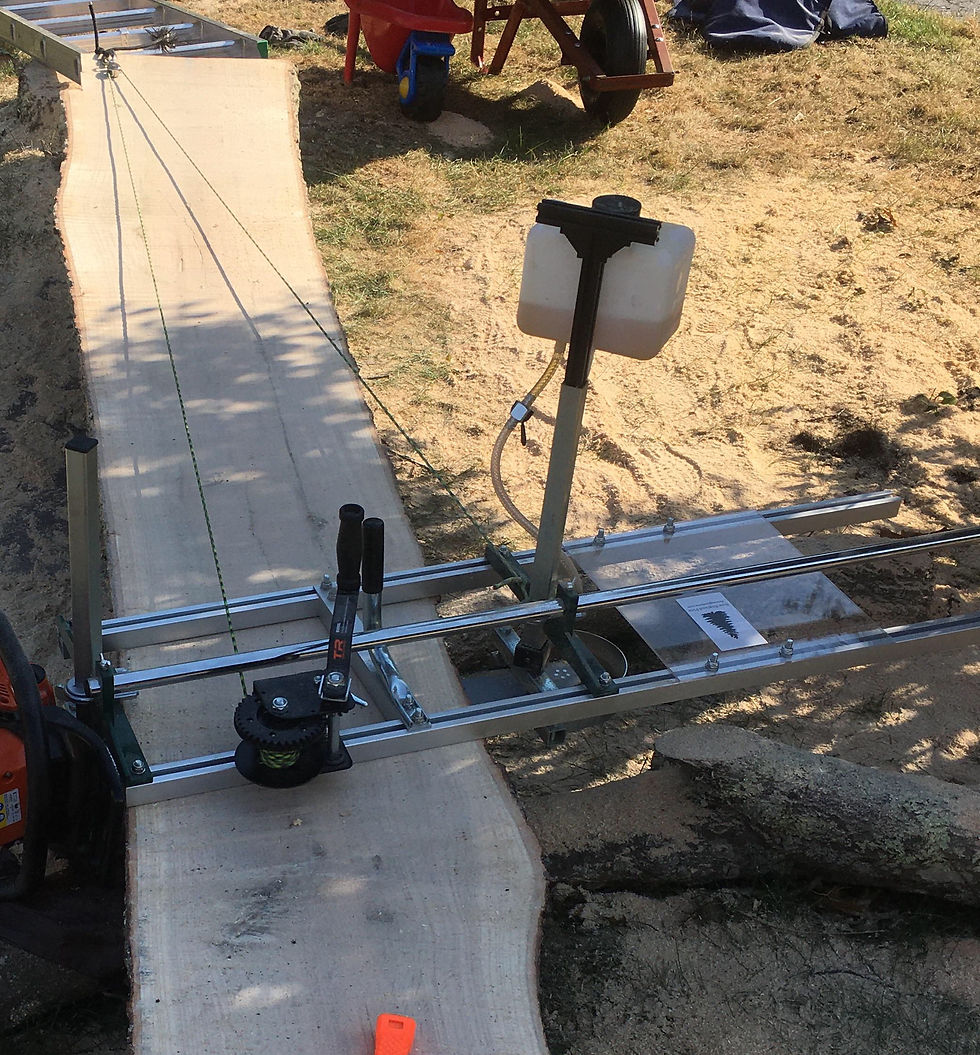WHAT SIZE BAR DO I NEED?
- Steve Adams
- Nov 26, 2021
- 2 min read
Updated: Dec 3, 2021
This is a common question among new and veteran millers alike. Bigger bars are a big investment, so knowing what size bar you will need in your mill has an impact on your budget. We typically get this question from our customers, "What size bar do I need?".
The answer usually depends on a few things, but can be summarized based on what type of cutting you plan to do, what type of you saw you have or plan to get, and whether you know what you're going to cut.
SIZES OF BARS
Chainsaw bars come in relatively standard lengths. We only carry bars for our bigger saws starting at 20 inches. You can buy shorter ones but we find that with 70cc saws and up that 20 inches is the smallest practical bar. From 20", you can get 24", 28", 32", 36" and 42" as custom sizes. You may find 25" bars from other brands and some other off sizes, but these are the typical standards.
CHAINSAW MILLING BAR SIZING

If you're starting out with a log you want to slab, and you only plan on doing logs that same size in the future, then it's a straightforward answer to what size bar you should get. When you mount a chainsaw and bar into a chainsaw mill, you typically lose 6 inches on the published length of the bar. So if you have a 36" bar, you will end up with a 30" wide cutting capability. If you have a log that's 30" at the widest point, then you would be good to go. However if any point on that log is bigger than 30" you will not be able to make it through and should go up to the next size bar.
CROSS CUTTING BAR SIZING

When you're felling or bucking trees, you have a lot more flexibility than when the saw is mounted in a chainsaw mill. You can cut from both sides of a log if your bar isn't long enough and there's a bunch of other tricks. We prefer felling trees with bars that are long enough to perform the wedge cut, bore cut and back cut all from one side of the tree. This is efficient and quick and can get the operator out of harms way faster than trying to bore cut in from both sides. So when you are sizing a bar for felling or bucking you will need to know how big trees tend to grow in your area. In New England, a 36" bar will handle most jobs, and more often than not a 28" will suffice. You also have to think about weight of carrying around a saw all day, so we also recommend light weight bars. They are stiff enough in longer lengths to work for felling and bucking and make a noticeable difference towards the end of the day.
If you ever have any questions about what type or length of bar you will need, please contact us and we can help you!


Comments